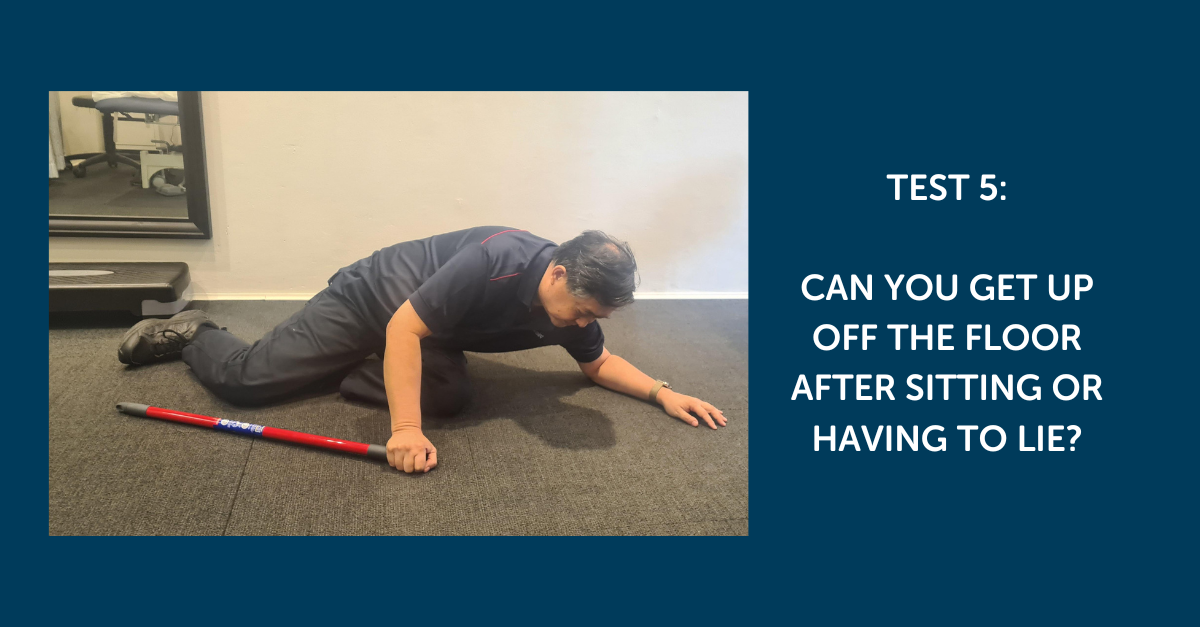Osteoarthritis Quick Test | Do I Need a Joint Replacement?
Wednesday, July 10, 2024
Surgery to replace damaged or worn joints due to Osteoarthritis is a major component of our health care system. It uses a lot of resources in costs and lives affected.
As we age, many of us except the inevitable and take painful joints as a part of getting older. But for many of us, this outcome can be avoided, if not, significantly delayed.
If you get pains or stiffness within the hip/knees you should be seeking advise already.
The following tests for flexibility will allow you to determine.
You may need to improve aspects of your day to day living by simply doing some simple exercises or getting assistance from your Physio Inq clinic.
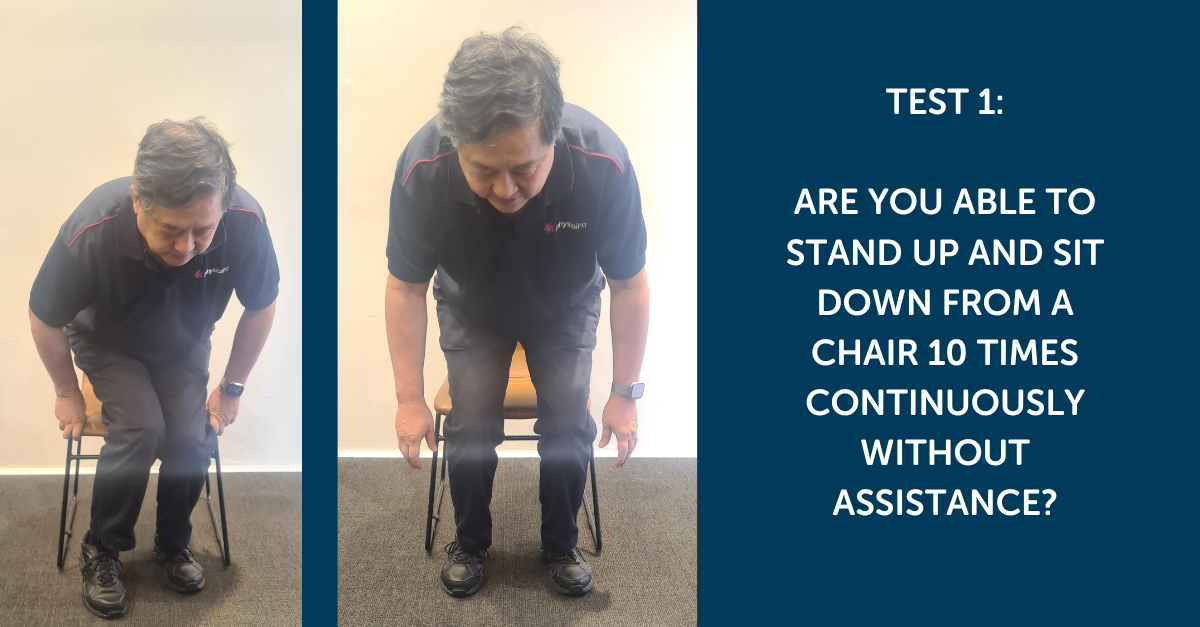
Are you able to stand up and sit down from a chair 10 times continuously without assistance?
Before we can walk, we must be able to stand up. To stand requires technique, but it also requires power and strength to do it safely. If you are not strong enough to stand 10 times then simply practice 2-3 times each day of getting up 2-3 times out of a chair, within a week you may be able to increase the number to 4-5 and then eventually get to 10.
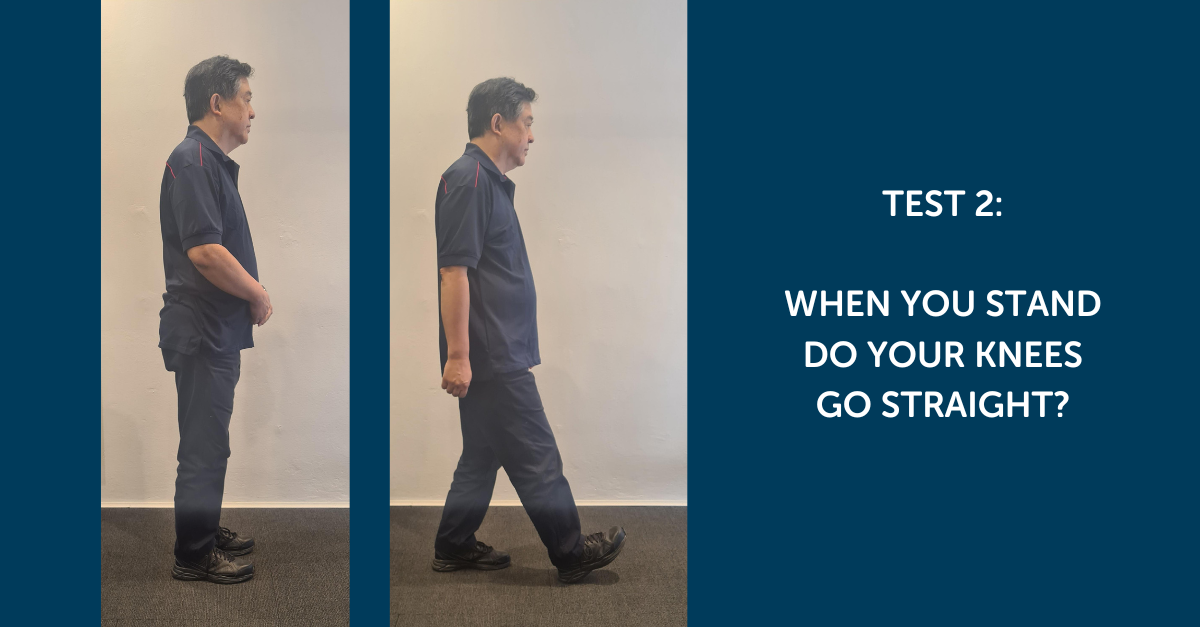
When you stand do your knees go straight?
When a airplane lowers it wheels to land, it must ensure that the landing gear locks into place otherwise the plane will collapse on landing. The same principle applies to our knees! The knee has special cartilage within the joint called the meniscus. The most important function of the meniscus is to allow the thigh bone to sit in a stable position when we straighten our legs. This function then allows us to conserve strength within our thigh muscles allowing us stand for long periods eg waiting in a long queue or guarding a sentry post. As we age we may lose this ability to straighten the knees due to changes in our posture when we walk. If you cannot straighten the knees then the quadricep (Thigh) muscles will need to work harder to prevent the knee collapsing as you walk - and so become tired and painful.
To prevent this problem from developing try lying on the floor with a folded towel placed under the lower part of the leg (below the knee). Then stretch by trying to straighten the knee by pushing the knee down towards the floor. Note: In advanced conditions you will need the assistance of your Physiotherapist to help mobilise the knee.
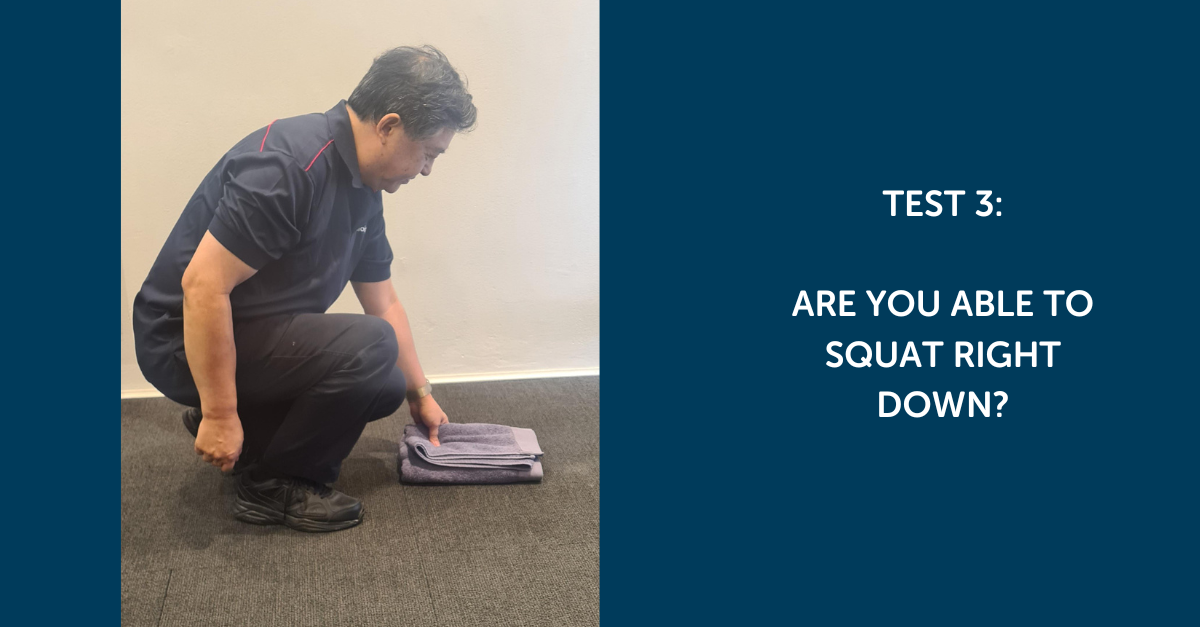
Are you able to squat right down?
Being able to squat all the way down is a function that we may not need every day, but we should be able to do when needed. Squatting may help prevent us from back injuries if we drop something on the floor and need to pick it up! Being able to squat is a sign of a healthy knee.
If you are unable to squat then you should seek advise from your Physiotherapist to determine the problem.
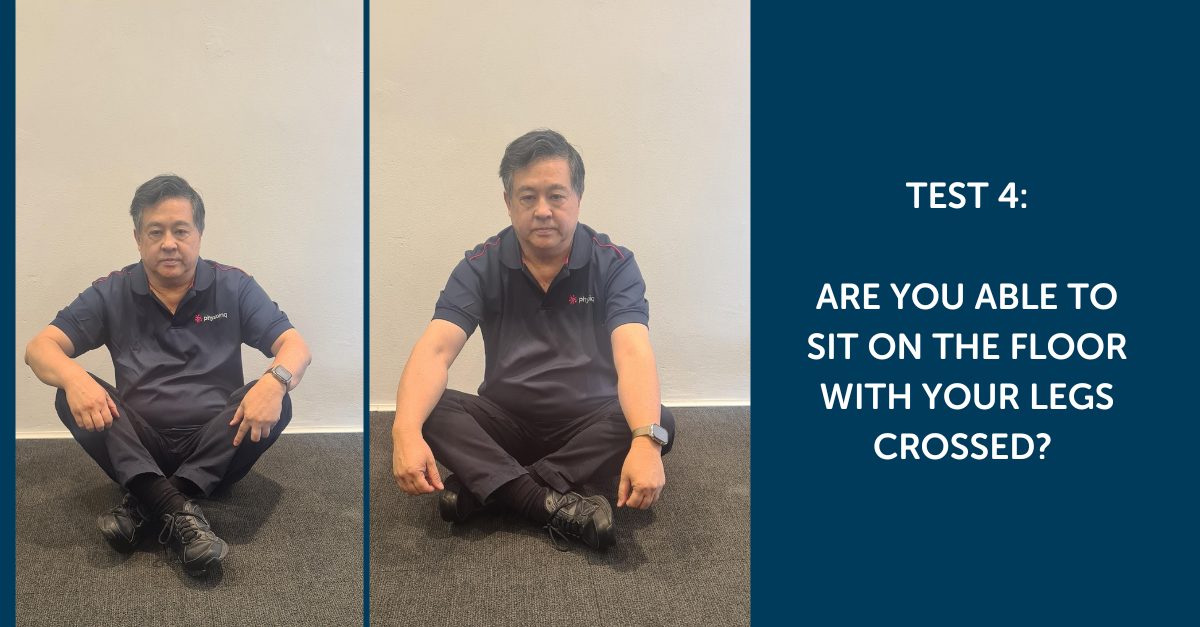
Are you able to sit on the floor with your legs crossed?
People often avoid sitting on the floor with their legs crossed because they find it uncomfortable, or they lack the flexibility to do so. In most cases this is due to restrictions of the hip from muscle tension. Long term tension from the hip muscles can accelerate the deterioration of an arthritic hip joint through increased pressure when you walk. By practising the position you have difficulties with you may reduce this tension. A little Yin yoga may be helpful but see your Physiotherapist for an assessment first.
Can you get up off the floor after sitting or having to lie?
A lot of people may experience a fall within the house, but are they able to get up off the floor if not badly injured? Many people struggle because it is a demanding task. It requires reasonable strength (and a strategy) based on your body type to get up off the floor. A person needs strength in the arms to lift or push their torso up or to reach for a chair. This strength is often lacking because that person has not been required to do tasks that require a more physical demand. If you are not able to get to a gym, or you do not mow the lawn to keep yourself fit then once more, practise the task to improve your independence. Practise lying on the floor and turning over onto your side, rolling back onto your back and then getting up. Not only will you improve the strength of your arms but appreciate the benefit of having healthy legs!
